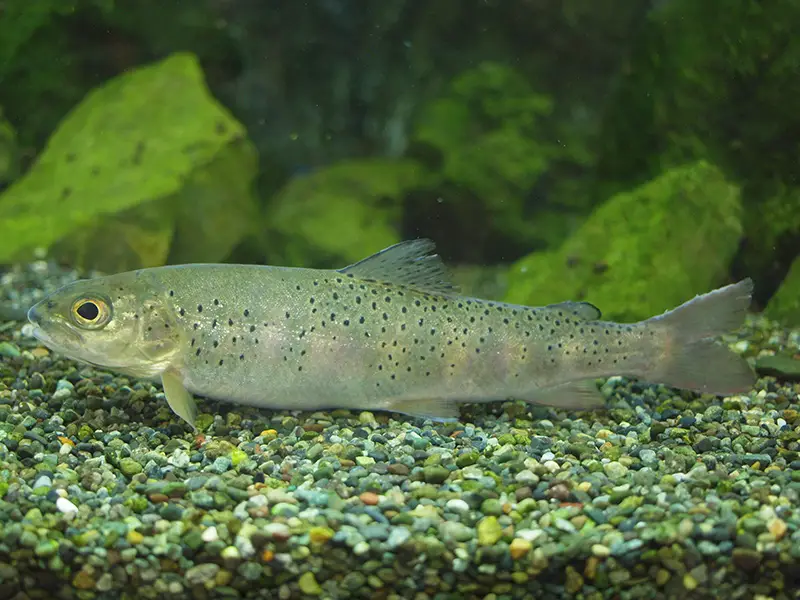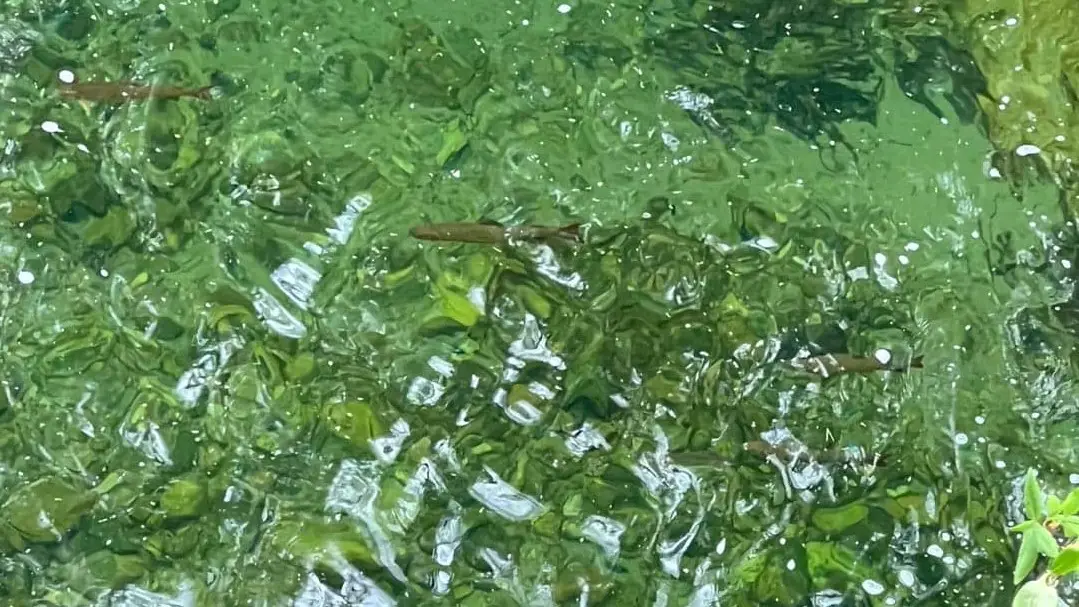I have decided to start a series covering some of the lesser known species of trout, and trout like Salmoninae’s.
I am going to start by covering the Manchurian trout.
The Manchurian trout (also known as Asiatic trout or Lenoks) is a Salmonid fish found in East Asia and Russia.
There are currently four recognized species of Manchurian trout, the most well known of which is the B. Lenok
- Brachymystax lenok
- Brachymystax savinovi
- Brachymystax tumensis
- Brachymystax tsinlingensis
Appearance wise, they do resemble a brown trout. Their bodies are speckled with dark brown spots, and their fins are reddish or yellow. Close to spawning, they do develop red dots and bands along their bodies.
Manchurian trout are capable of growing up to 15kg (33lb) with fish over a meter (3.4ft) being recorded. This puts them slightly smaller than the world record Rainbow or Brown trout. The average Manchuria trout is very comparable in length to mature trout of other species.
While Manchurian Trout might look like Brown Trout, they are actually genetically quite far removed from the western hemisphere trout and salmon species.
They are slightly more closely (but still distantly) related to Rainbow trout but in some ways, they straddle the gap between western trout/salmon and grayling.

Where are they found?
Manchurian trout are found throughout East Asia, although populations are threatened in South Korea and declining in China due to overexploitation and pollution.
– Russia east of the Caucasus
– Northern Mongolia
– Northeastern Kazakhstan
– Northern China
– Korean Peninsula
Lenok trout in Mongolia
Most western anglers will likely encounter them when fishing in Mongolia where the population appears to be relatively healthy. Large Lenok are caught frequently. Although in Mongolia the more famous taimen fishery does overshadow the Manchurian trout fishery.
Freshwater fishing in Mongolia is also relatively expensive (approximately $7000 for a 9 day trip, not including flights) because it is restricted to permit holders on guided trips.
Unsupervised fishing is not allowed. These restrictions are apparently in place to protect the sustainability of the fishery. Mongolia might be a low cost country, but expect to pay western lodge prices to fish there.
Lenok trout in South Korea
South Korea, despite the lack of fish probably offers the easiest option for unguided trips. Firstly, you do not need a license to fish in South Korea and it is legal to fish in most rivers and streams. (although many reservoirs are paid waters). Additionally, all fishing within National Parks is banned.
I personally been to several Manchurian trout rivers in South Korea and faced quite a moral dilemma about whether I should target them or not because the wild population is becoming endangered.
Generally, it is legal to fish for them, but they must be released (although poaching does occur). I highly recommend the use of barbless hooks and minimizing handling.
Trout fishing in Korea is extremely difficult due to low population numbers caused largely by heavily modified waterways and deteriorating water quality. The Manchurian trout are isolated to only a handful of headwaters in the Gangwon province.
North Korea likely has a healthier fishery, but for obvious reasons fishing, there is not possible.
Lenok trout in China
I do not know a lot about Lenoks or fishing in China, but they do appear to be relatively widespread within the Amur Basin. Lenoks can be found within the headwater tributaries of some iconic rivers including the Yangtze and the Yellow River.
In some regions, Lenok populations are still healthy, but elsewhere they are facing declining due to development and overfishing. Diseases from farmed Lenoks might also be having a negative effect on wild populations.
The video below does demonstrate that within China there is still some pristine Lenok fishing to be had. It is certainly on my bucket list once the borders reopen.
Preferred Habitat
Manchurian trout prefer cold, clean flowing water. They are more commonly found in rivers and streams than lakes but they can exist in both.
In Mongolia and Russia, they typically share the same waters as Taimen and Graylings.
Lenok’s overwinter in deep pools, with low water velocity. This is a characteristic they share with Brown and Rainbow trout.
Spawning
Lenoks migrate to their spawning ground late Winter, which usually takes place sometime in February or March after the ice has thawed. Likely later again further north in Siberia or Mongolia.
The males arrive first to fight out territories and are later joined by the females. They spawn in the same general area and time as graylings, and the two species have been seen courting each other. Although I have not heard of any hybrids being reported.
Lenok’s prefer to spawn over shallow, well aerated gravel in the headwaters of rivers.
How to Catch them?
Lenok respond well to typical trout tactics. They can be caught on all the typical fly and spinning tackle, but they do seem to have quite a fondness for dries.
I have read reports out of Mongolia that at certain times of the year they are very fond of smashing mouse and frog imitations.

